
Minter HUB Cross-Chain Fee Calculator
Cross-Chain Transaction Fee Calculator
Estimate the total cost of transferring tokens using the Minter HUB bridge.
Estimated Transaction Costs
Transaction Amount:
Bridge Service Fee:
Gas Cost:
Total Estimated Cost:
Note: The service fee is fixed at 1% of the transferred amount. Gas costs vary based on network congestion.
The Minter HUB bridge enables fast cross-chain transfers (20-60 seconds) between Ethereum, BSC, and Minter chains.
When you hear the name Minter HUB, you’re looking at a Minter HUB (HUB) is a cross‑chain cryptocurrency token that acts as the native asset of the Minter Hub network, a decentralized liquidity‑transport system for large‑scale DeFi operations. Launched by the Minter Team, HUB lives on both Ethereum (as an ERC‑20) and the Minter blockchain, with a hard‑capped supply of 1000000 units. In plain terms, HUB works like a bridge ticket that lets you move value between Ethereum, Binance Smart Chain (BSC) and the Minter chain without sacrificing security.
TL;DR - Quick Takeaways
- HUB is a native bridge token for the Minter Hub network, enabling cross‑chain DeFi.
- Fixed max supply: 1000000 HUB; no minting beyond that.
- Operates on Ethereum (ERC‑20) and Minter; primary trading on PancakeSwap.
- Cross‑chain swaps take 20‑60 seconds and carry a 1% service fee plus oracle gas costs.
- Price outlook: volatile, with analysts forecasting $2.9‑$3.2 by 2026 and a possible long‑term rise toward $40 by 2031.
How the Minter Hub Network Works
The backbone of HUB is the Minter Hub network is a set of decentralized validators called oracles that maintain simultaneous connections to multiple blockchains via multi‑signature wallets. These oracles watch for deposit events on one chain, lock the tokens, and mint a corresponding amount on the destination chain. Because the oracles run unmodified EVM code, developers can deploy existing Ethereum smart contracts on the Hub without rewriting them.
Two deployment modes exist: an “advanced” mode for experienced developers who want full control, and a “simplified” mode that lets non‑technical users launch basic contracts with a few clicks. The network’s fee model is straightforward - each oracle signature incurs the usual Ethereum gas plus a flat 1% service fee retained by the Hub’s validators.
Key Technical Attributes
- Validator architecture: Oracles act as both block producers and cross‑chain messengers.
- Smart‑contract compatibility: Full EVM support means Solidity contracts run unchanged.
- Transaction speed: Typical cross‑chain swaps settle in 20‑60 seconds.
- Fees: Gas on the source chain + 1% Hub fee.
Tokenomics - Why HUB Has Value
HUB’s economics revolve around scarcity and utility. With a maximum supply of 1000000 that cannot be increased, each token becomes more valuable as the network gains users. Tokens serve two main purposes:
- Governance: Holders vote on oracle proposals, including token burns or supply adjustments.
- Fee payment: Network fees are payable in HUB, giving demand to the token whenever a cross‑chain transfer occurs.
The deflationary angle comes from the fact that HUB can only leave circulation through a consensus‑driven burn, ensuring no hidden inflation.
Market Performance and Liquidity
HUB’s price history is a roller‑coaster. Different trackers report wildly varying numbers because the token trades on only one major DEX - PancakeSwap is a Binance Smart Chain‑based decentralized exchange where HUB’s primary liquidity pool resides. As of October2025, CoinPaprika lists HUB at $0.59 with a 24‑hour volume of $0.38M, while other platforms like DigitalCoinPrice claim a recent high of $7.19 and an all‑time peak of $216.59 in early 2024. Such discrepancies highlight the token’s thin order books and limited exchange coverage.
Liquidity is a practical concern: moving even modest amounts can shift the price noticeably, and the 1% service fee adds to the cost of arbitrage. For everyday users, this means you’ll likely need to hold HUB for its bridge utility rather than speculative trading.

How HUB Stacks Up Against Other Cross‑Chain Bridges
| Protocol | Launch Year | Max Supply | Average Fee | Supported Chains | Typical Tx Time |
|---|---|---|---|---|---|
| Minter HUB (HUB) | 2023 | 1000000 HUB | 1% + gas | Ethereum, BSC, Minter | 20‑60s |
| Polygon Bridge | 2019 | None (native tokens only) | ~0.1% + gas | Ethereum, Polygon | ≈15s |
| Avalanche Bridge | 2021 | None | ~0.5% + gas | Ethereum, Avalanche | ≈30s |
| Wormhole | 2020 | None | ~0.2% + gas | Multiple (Solana, Ethereum, BSC…) | ≈45s |
From the table you can see HUB’s biggest advantage is its dedicated native token that also serves governance and fee‑payment roles. The downside is a higher fee and very limited liquidity compared with heavyweights like Polygon.
Use Cases - Who Should Care About HUB?
DeFi developers building multi‑chain protocols can leverage HUB’s oracle network to move assets without rewriting contracts for each chain. Liquidity providers earn a share of the 1% service fee, which can be attractive if the pool grows. Arbitrage traders might find short‑term opportunities, but the high fee and thin order books often erode profit margins.
If you’re a casual investor simply looking for price action, HUB may not be the best entry point. Its value is tightly coupled to real‑world usage of the Minter Hub bridge, so you’ll benefit most by supporting projects that need cross‑chain liquidity.
Future Outlook and Price Predictions
Analysts are divided. Short‑term forecasts (2024‑2025) anticipate volatility, with a potential rebound to $8‑$9 if the bridge gains traction on new DEXs. Mid‑term estimates for 2026 place HUB in a $2.6‑$3.2 corridor, assuming modest adoption and fee‑revenue growth. Long‑term visions (2030‑2031) are bullish, projecting $28‑$41 if HUB secures partnerships with major DeFi platforms and expands to additional blockchains.
Remember, price models are based on historical data and speculative assumptions. They don’t guarantee returns, and the token’s narrow market presence adds extra risk.
How to Acquire and Store HUB
- Set up a compatible wallet (e.g., MetaMask configured for BSC or a native Minter wallet).
- Obtain BNB or ETH for gas fees.
- Visit PancakeSwap and connect your wallet.
- Swap BNB/ETH for HUB using the HUB/BNB or HUB/ETH pair.
- After the swap, add HUB to your wallet’s token list using the contract address (0x… for ERC‑20, corresponding Minter address for the native chain).
For developers, the process includes integrating the Hub’s SDK and interacting with the oracle contracts via standard Web3 libraries.
Potential Pitfalls and Risk Management
- Liquidity risk: Small pools can cause slippage; consider only moving amounts you’re comfortable losing.
- Fee burden: The 1% service fee plus gas can add up on frequent transfers.
- Exchange concentration: Being listed mainly on PancakeSwap limits exposure to mainstream traders.
- Oracle centralization concerns: While the network is decentralized, a limited number of active oracles could create temporary bottlenecks.
Mitigate these risks by diversifying across bridges, monitoring oracle activity, and staying updated on any new exchange listings.
Frequently Asked Questions
What blockchain networks does HUB support?
Currently HUB operates on Ethereum, Binance Smart Chain (BSC) and the native Minter blockchain. The network’s oracle layer can be extended to additional chains, but official support is limited to these three as of 2025.
How are cross‑chain fees calculated?
Fees consist of the standard gas cost on the source chain plus a flat 1% service fee charged by the Hub’s oracle validators. The gas portion varies with network congestion, while the 1% stays constant.
Can HUB be used for governance?
Yes. HUB holders can vote on oracle proposals, including decisions to burn tokens or adjust certain network parameters. Governance weight is proportional to the number of HUB tokens staked.
Where can I trade HUB besides PancakeSwap?
At the moment, PancakeSwap is the only public DEX with notable HUB liquidity. Some smaller BSC‑based aggregators list HUB, but there are no major centralized exchanges offering the token yet.
Is HUB a good long‑term investment?
Its long‑term potential hinges on the adoption of the Minter Hub bridge. If the network secures more partners and expands to other chains, demand for HUB could rise. Conversely, limited liquidity and competition from cheaper bridges add risk. Treat it as a speculative asset tied to real utility rather than pure price speculation.

Next Steps - How to Get Involved
If you’re curious enough to test the bridge, start by swapping a small amount of BNB for HUB on PancakeSwap and sending it across to the Minter chain. Watch the transaction time and fee breakdown; that hands‑on experience is the best way to gauge whether the service fits your workflow.
Developers can contribute to the oracle network by running a validator node. The Minter Team provides open‑source scripts and a modest staking requirement, and participants earn a share of the 1% service fee proportional to their stake.
Finally, keep an eye on community channels (Telegram, Discord) for announcements about new exchange listings or partnership deals. Each new integration directly improves liquidity and may push the price higher.

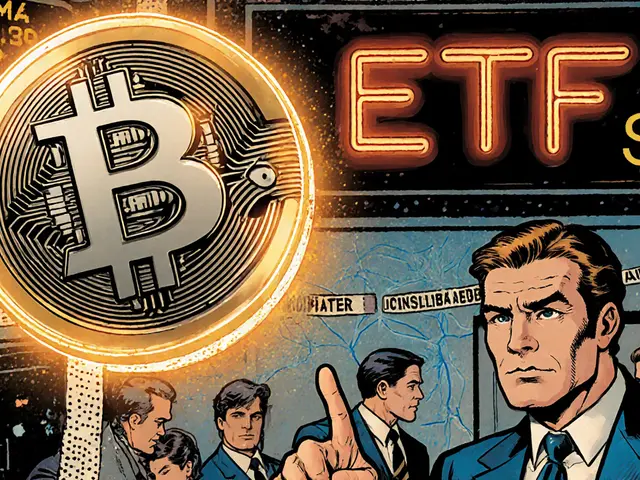
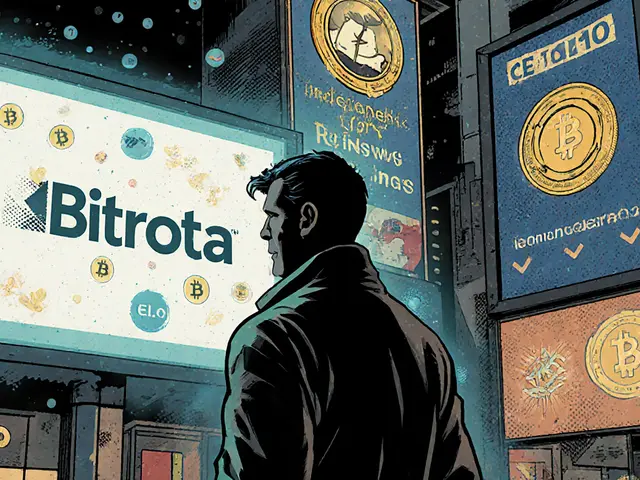
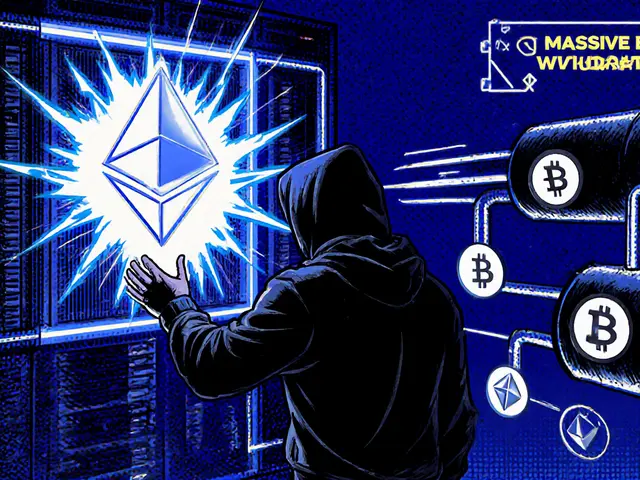
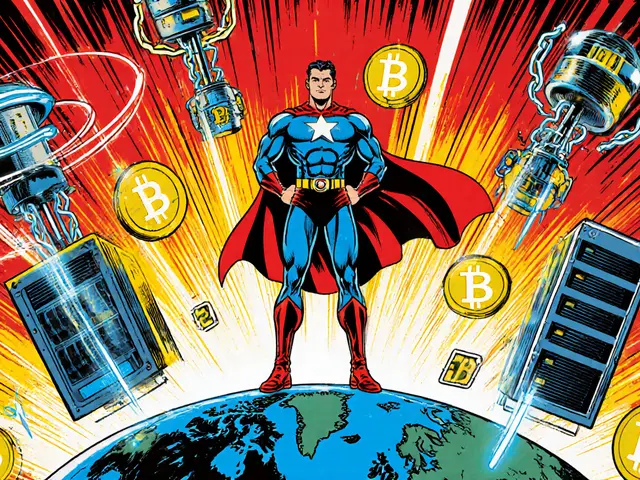
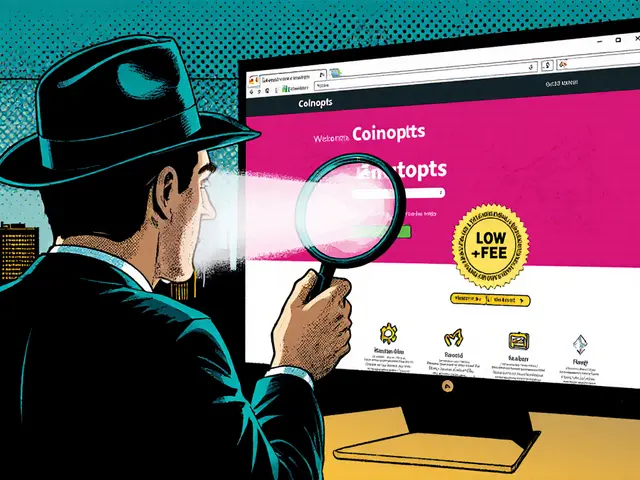
There are 15 Comments
Angela Yeager
Hey everyone, just wanted to point out that Minter HUB aims to simplify cross‑chain swaps by using a 1% service fee and fairly standard gas costs. The bridge supports Ethereum, BSC and the native Minter chain, which can be handy for diversifying liquidity.
From a practical standpoint, the fee calculator on the site does a decent job of showing you the total cost before you confirm a transfer. Keep an eye on gas prices, especially during network congestion, because they can spike quickly.
Overall, it’s a useful tool for anyone looking to move assets without dealing with multiple exchanges.
vipin kumar
While the interface looks clean, it’s hard not to wonder who’s really behind the Minter HUB. The 1% fee is presented as a service charge, but there’s no transparent disclosure about where that percentage ends up. Some of the code repositories hint at a centralized oracle that could be manipulated.
If the bridge were truly decentralized, you’d see a more community‑driven governance model. As it stands, I remain cautiously skeptical about the long‑term security of funds moving through this portal.
Lara Cocchetti
From an ethical perspective, the funneling of user fees into a single entity raises serious concerns. Even if the technical implementation is solid, the moral hazard of a monopolistic fee collector cannot be ignored. It’s as if they’re masquerading as a utility while effectively extracting wealth from everyday traders.
We should demand full audit reports and a clear roadmap for decentralizing fee distribution. Until then, using this bridge feels like endorsing a hidden agenda.
Mark Briggs
Nice, another bridge that promises speed but probably forgets about the occasional hiccup. You’ll see your tokens in 30 seconds, then maybe not at all.
mannu kumar rajpoot
The so‑called “fast” transfers are just a marketing ploy. Under the hood, the hub still relies on the same Ethereum nodes that everyone else uses, meaning you’re still vulnerable to the same congestion and MEV attacks. Moreover, the lack of transparent validator selection is a red flag for any serious investor. If you’re looking for genuine cross‑chain interoperability, you might be better off exploring decentralized options that have already proven their resilience.
In short, proceed with caution and do your own due diligence.
Tilly Fluf
Dear community, kindly note that the Minter HUB bridge purports to facilitate token migration across Ethereum, Binance Smart Chain, and the Minter network with a nominal service fee. The documentation indicates a transaction latency ranging from twenty to sixty seconds, contingent upon network conditions.
It is advisable to monitor gas price fluctuations, as they may materially affect the overall expense. Should you elect to employ this service, ensure that you retain cryptographic proof of the transaction for future reference.
Darren R.
Ah, the Minter HUB-what a splendid illustration of modern financial theater!; it’s a crossroads where ambition meets the ever‑present specter of centralization, and where every 1% fee becomes a small, yet unmistakable, tribute to the unseen architects of the protocol. One could argue that such a modest levy is merely a token of appreciation for the developers, but let us not be naïve; every percentage point quietly reshapes the distribution of wealth across an ever‑expanding user base.
Consider the elegance of a system that promises “20‑60 seconds” transfer times; it is, in fact, a promise woven from the threads of optimism and market pressure. Yet, beneath this sheen lies a lattice of contracts that, upon closer inspection, reveal a degree of opacity that would make even the most seasoned cryptographer raise an eyebrow.
Now, let us turn to the matter of security: the bridge’s reliance on a single oracle for price feeds and fee calculations is, arguably, its Achilles’ heel; a compromised node could orchestrate a cascade of unintended consequences, draining trust faster than any gas‑price surge. In a world where decentralization is heralded as the ultimate safeguard, the hub’s semi‑centralized governance model feels like a step backward, a nostalgic nod to the days when a handful of custodians held sway over the digital commons.
Nevertheless, the practical utility cannot be dismissed-cross‑chain liquidity is a craving that many traders feel acutely. By enabling swift movement between Ethereum, BSC, and Minter, the hub reduces friction, potentially unlocking arbitrage opportunities that would otherwise remain dormant.
But remember, my dear readers, arbitrage is a double‑edged sword; it rewards the swift and punishes the unwary. A 1% fee, modest as it may appear, can erode profit margins, turning a lucrative spread into a marginal loss.
Furthermore, the hub’s user experience-clean, intuitive, and punctuated with real‑time fee breakdowns-exemplifies the best of modern UI design. Yet design, no matter how polished, cannot conceal the underlying economic models that dictate token flow.
In sum, the Minter HUB stands at an intersection of promise and peril, offering a bridge that is both a conduit for opportunity and a reminder of the persistent centralization that haunts the crypto realm. Approach it with optimism tempered by vigilance, and may your transactions be swift, your fees modest, and your insights ever‑sharp.
Hardik Kanzariya
Hey folks, just wanted to add a quick note: if you’re experimenting with the HUB, try a tiny transfer first. It’s a great way to get comfortable with the fee calculator and see how the gas price fluctuates in real time. I’ve found that doing a $5 test run helps avoid any unpleasant surprises when moving larger amounts.
Shanthan Jogavajjala
Let’s dissect the technical stack: the bridge leverages a set of smart contracts that act as escrow agents between chains, and the fee logic is embedded directly into the contract’s payable functions. While the UI abstracts away the complexity, power users will appreciate the availability of the contract addresses on Etherscan for audit purposes.
That said, the jargon‑heavy nature of the documentation can be a barrier for newcomers, especially when terms like “chain‑id mapping” and “signature aggregation” are tossed around without proper context. Still, the mixed formality strikes a balance between professional tone and accessibility, which is commendable.
Jack Fans
Okay, here’s the quick‑and‑dirty rundown: the HUB’s fee calculator is super handy, it’ll show you the exact 1% service charge plus whatever the current gas is. I’ve used it a few times and, yeah, sometimes the gas numbers look a tad high-maybe a typo in the UI? Anyway, just double‑check on a gas tracker before you hit confirm.
Also, keep an eye on the bridge’s status page; they sometimes post maintenance notices that could affect transfer times.
Adetoyese Oluyomi-Deji Olugunna
One must lament the mediocrity of platforms that fail to transcend the banalities of mainstream finance. The Minter HUB, while functional, offers little in the way of avant‑garde innovation. Its fee structure, though transparent, reeks of conventional commoditization.
Krithika Natarajan
The bridge’s interface is clear and the fee breakdown is helpful. It’s a good starting point for new users. Just remember to check gas before confirming.
Rebecca Stowe
Super excited to see a tool that actually makes cross‑chain moves feel less intimidating! The 1% fee is reasonable, and the speed claims sound promising. Keep up the good work, and maybe add a tutorial video for newcomers.
Aditya Raj Gontia
Honestly, the hub feels like just another middleman. The fee is okay, but the whole thing could be done with existing DEX bridges.
Kailey Shelton
Looks decent.
Write a comment
Your email address will not be published. Required fields are marked *